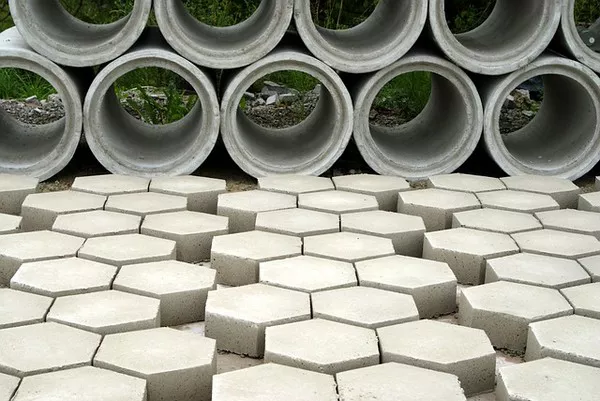In the quest for efficient and sustainable wastewater treatment, lagoon sewer systems have emerged as a viable solution for many communities around the world. These systems are widely used in both urban and rural areas due to their simplicity, cost-effectiveness, and ability to treat wastewater effectively. This article aims to provide a comprehensive understanding of how a lagoon sewer system works, its components, and its role in wastewater treatment.
What is a Lagoon Sewer System?
A lagoon sewer system, also known as a stabilization pond system, is a type of wastewater treatment system that utilizes natural processes to purify sewage. It consists of a series of man-made ponds or lagoons, where wastewater undergoes biological, chemical, and physical treatment before being safely discharged or reused. This eco-friendly approach has gained popularity in regions where conventional centralized sewage treatment facilities are not practical or economically feasible.
Key Components of a Lagoon Sewer System
1. Influent Pipeline:
The lagoon sewer system begins with an influent pipeline that collects raw sewage from households, commercial establishments, and industrial facilities. The influent pipeline directs the incoming wastewater to the first lagoon for treatment.
2. Primary Treatment Lagoon:
The first lagoon, known as the primary treatment lagoon or facultative pond, serves as a preliminary treatment step. Here, the sewage is allowed to settle, and larger solids are separated through sedimentation. As the name suggests, this lagoon operates under facultative conditions, meaning it supports both aerobic and anaerobic microbial processes. Aerobic bacteria break down organic matter in the presence of oxygen, while anaerobic bacteria work in oxygen-deficient zones.
3. Secondary Treatment Lagoon:
After passing through the primary treatment lagoon, the partially treated wastewater enters the secondary treatment lagoon, also referred to as the maturation or aerobic pond. This lagoon fosters aerobic microbial activity, which further breaks down organic pollutants and reduces pathogens through the oxygenation of the water.
4. Tertiary Treatment Lagoon (Optional):
In some lagoon sewer systems, a tertiary treatment lagoon may be included to enhance the removal of residual contaminants. This lagoon may incorporate advanced treatment technologies, such as constructed wetlands or additional polishing ponds, to achieve higher levels of water quality.
5. Effluent Discharge:
Upon completion of the treatment process, the effluent is discharged from the final lagoon. The effluent may be released into nearby water bodies, used for irrigation, or further treated for specific reuse applications, depending on local regulations and requirements.
Working Principles of a Lagoon Sewer System
1. Biological Processes:
The heart of a lagoon sewer system lies in the biological processes taking place within the lagoons. As wastewater moves through the primary and secondary lagoons, naturally occurring microorganisms, including bacteria, algae, and protozoa, thrive in the nutrient-rich environment. These microorganisms break down organic matter, nutrients, and pathogens, thereby purifying the water.
2. Sunlight and Algae:
In addition to microbial action, sunlight plays a vital role in lagoon sewer systems. Sunlight provides energy for photosynthesis, allowing algae to grow and absorb nutrients like nitrogen and phosphorus, which are key components in wastewater treatment. This process, known as algae-based nutrient removal, helps in reducing excess nutrients and promoting a balanced ecosystem within the lagoon.
3. Settling and Sedimentation:
As the wastewater flows through the lagoons, gravity allows heavier solids to settle at the bottom. This sedimentation process separates a significant portion of the suspended solids from the water, effectively reducing the overall pollutant load.
4. Oxygenation:
The secondary treatment lagoon, being an aerobic pond, is designed to encourage the growth of oxygen-producing plants and algae. The presence of oxygen fosters aerobic microbial activity, which accelerates the decomposition of organic matter and breaks down harmful contaminants.
Advantages of Lagoon Sewer Systems
1. Cost-Effectiveness:
Lagoon sewer systems are generally more affordable to construct and maintain compared to conventional wastewater treatment plants. They require less complex equipment and minimal energy input, making them an economical choice for small communities and rural areas.
2. Low Energy Consumption:
As a predominantly natural treatment process, lagoon sewer systems have significantly lower energy consumption compared to mechanical treatment systems. The reliance on solar energy for photosynthesis and aerobic microbial activity further contributes to energy efficiency.
3. Minimal Operation and Maintenance:
These systems are simple to operate and typically require minimal maintenance. The absence of mechanical components reduces the risk of technical failures, leading to lower operational costs.
4. Environmentally Friendly:
Lagoon sewer systems promote sustainable wastewater treatment, with the natural processes often leading to a more environmentally friendly effluent discharge. The presence of aquatic life, such as fish and waterfowl, can enhance the ecological value of lagoons.
Challenges and Considerations
While lagoon sewer systems offer various benefits, they also face certain challenges that require careful consideration:
1.Land Requirement: Lagoon sewer systems necessitate substantial land areas to accommodate the series of lagoons. In urban environments with limited available space, this may pose a significant challenge.
2. Odor Generation: In some cases, lagoon systems can produce objectionable odors due to the breakdown of organic matter. Proper design, operation, and maintenance are essential to minimize odor issues and ensure community acceptance.
3. Climate and Seasonal Variability: The efficiency of lagoon sewer systems may be affected by climatic conditions, particularly in regions with extreme temperatures or heavy rainfall. Winter months or extended periods of rainfall may reduce the effectiveness of solar energy-driven processes.
4. Effluent Quality: While lagoon sewer systems can achieve substantial pollutant removal, they might not consistently meet stringent water quality standards required for specific discharge or reuse applications. In such cases, additional treatment or polishing may be necessary.
Conclusion
Lagoon sewer systems stand as a testament to the ingenuity of harnessing nature’s power to address the global challenge of wastewater treatment. Through biological, chemical, and physical processes, these systems effectively purify sewage, offering cost-effectiveness, simplicity, and environmental benefits. As technology advances and environmental regulations evolve, lagoon sewer systems may continue to play a vital role in providing sustainable and reliable wastewater treatment solutions for diverse communities worldwide.

